North Korea ‘hydrogen bomb’: What damage can it cause?
THE hydrogen bomb North Korea tested is its most sophisticated yet. If Pyongyang dropped one here’s what would happen.
NORTH KOREA claims to have successfully tested a hydrogen bomb for the first time in a move that alarmed the world.
The test sparked a furious response from the US, Japan, China and South Korea, which conducted a ballistic missile exercise in response to Pyongyang’s claim that it had successfully tested a miniaturised hydrogen bomb.
Experts have expressed alarm at the technology as well as how quickly Pyongyang has accelerated its nuclear weapons program.
North Korea’s state media claimed it tested the bomb, which was capable of being loaded into an ICBM in a major game changer. If it launched one on any western city, thousands would die and infrastructure would be destroyed.
According to John Hallam, a UN nuclear disarmament campaigner, the latest test is beyond frightening and proves Pyongyang is capable of making a devastating and deadly impact.
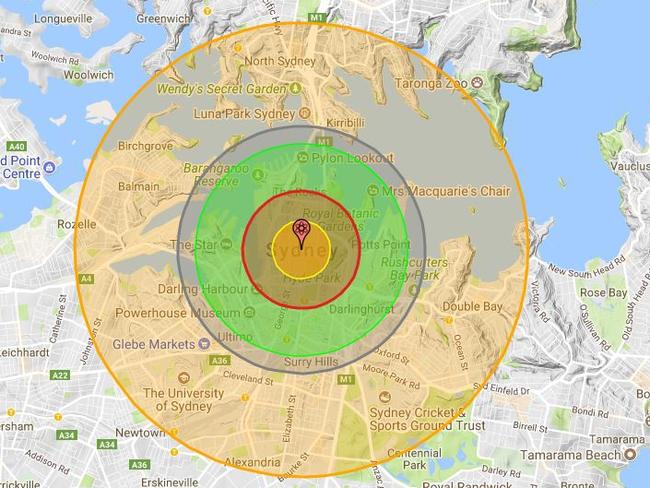
DEVASTATING FORCE
Hydrogen bombs are considered much deadlier and more devastating compared to a standard nuclear bomb.
An atomic bomb generates energy through the process of nuclear fission where the nucleus of an atom splits.
The hydrogen bomb, also called a thermonuclear bomb, is more powerful and uses fusion — or atomic nuclei coming together — to produce explosive energy.
Both are capable of making a deadly impact.
Mr Hallam, a member of the People for Nuclear Disarmament and the co-founder of the Human Survival Project, said he believed an attack on a major Australian city was unlikely. He said Pine Gap — a nuclear commander controlled installation — was more of a target, as were major built-up cities such as Seoul and Tokyo.
Mr Hallam said a bomb dropped over Sydney’s Centrepoint tower would wipe out the city and only those west of Homebush would “have any chance of survival”. The fireball from a 100Kt weapon would cover the entire area from Clarence Street to Hyde Park.
According to Alex Wellerstein’s NukeMap, an attack with such a weapon 1km above the tower would cause 65,000 casualties and more than 120,000 injuries.
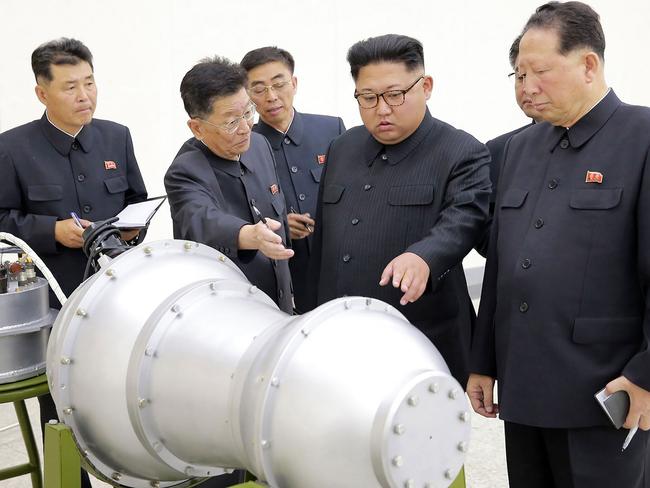
DEADLY, DESTRUCTIVE
Mr Hallam said whether Pyongyang tested a H-bomb or gas-boosted bomb remained a huge concern. Either would be much more destructive than that dropped on the Japanese cities of Hiroshima and Nagasaki at the end of World War II.
“North Korea is playing games,” Mr Hallam said. “Every time there’s universal prediction they will test a bomb, they don’t.
“But the surprising thing in this is how much bigger this test was.”
Mr Hallam warned the world was playing a very dangerous game by antagonising North Korea, which was determined to achieve its nuclear ambition despite sanctions, which simply weren’t working.
“Blind Freddie will tell you sanctions will not be effective,” he said.
“It will only incentive them to work harder and quicker to get what they want.
“We just don’t get it, we need to back off, calm down and talk and then talk some more. The photo released (of Sunday’s test) is pretty convincing, it has been sent to us for a reason.”
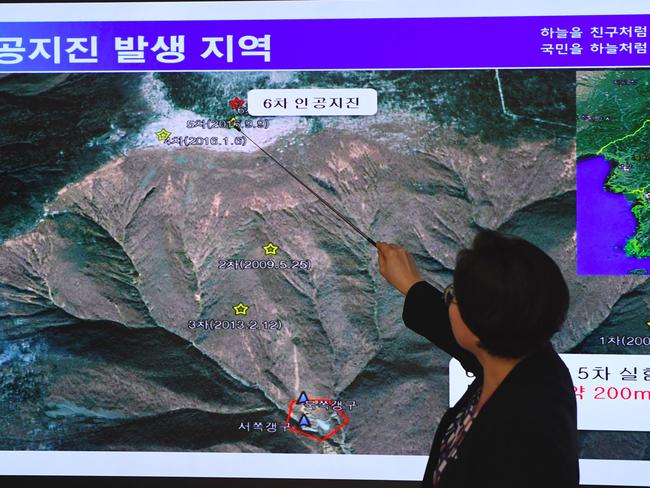
THE H-BOMB
The precise strength of the underground nuclear explosion had yet to be determined.
However, according to South Korea’s weather agency, the artificial earthquake caused by the explosion was five times to six times stronger than tremors generated by the North’s previous five nuclear tests.
Sunday’s detonation builds on recent North Korean advances that include test launches in July of two intercontinental ballistic missiles (ICBMs) that are believed to be capable of reaching the mainland US.
Tremors caused were at least 10 times as powerful as the last time Pyongyang exploded an atomic bomb a year ago, the Japan Meteorological Agency (JMA) said.
The Korea Meteorological Administration estimated that the nuclear blast yield of the presumed test was between 50 to 60 kilotons, or five to six times stronger than the North Korea’s test in September 2016.
However, the Arms Control Association said the explosion appeared to produce a yield in excess of 100 kilotons of TNT equivalent.
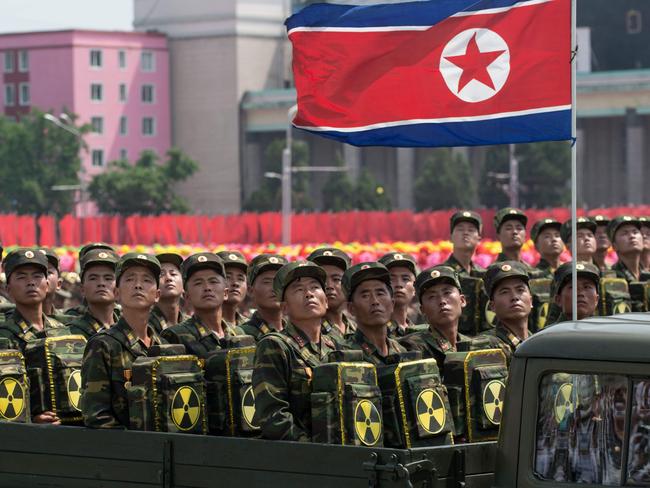
FEARS RAISED
Mr Hallam said he believed Sunday’s test probably involved a hydrogen bomb. According to Mr Hallam, standard US and Russian warheads were around the 100kt range, around the same that Pyongyang was said to have tested on Sunday.
“US and Russia have much bigger of course,” he said. “A 100kt device can easily fit into a missile, making it a city killer.
“The last nuclear test North Korea did was 20kt, the one before that was 10, while the first was 0.4kt so this (Sunday’s test) is easily 5-6 times as big as the one before.”
‘DISTURBING DEVELOPMENT’
According to Professor John Blaxland, Director of ANU’s Southeast Asia Institute, the test also has another unintended consequence.
“North Korea is giving cause for Japan’s rearmament, which is not in China’s best interests,” Prof Blaxland said.
“Japan may bolster its defence expenditure, this is a worrying development for China.
Prof Blaxland said a H-bomb was much more powerful and destructive.
“Sunday’s test is a disturbing development,” he said.
“This is concerning because Kim’s a paranoid dictator and we don’t really know what he will do.”
Prof Blaxland said a hydrogen bomb represented a significant increase in sophistication, adding to a complex and dangerous situation.
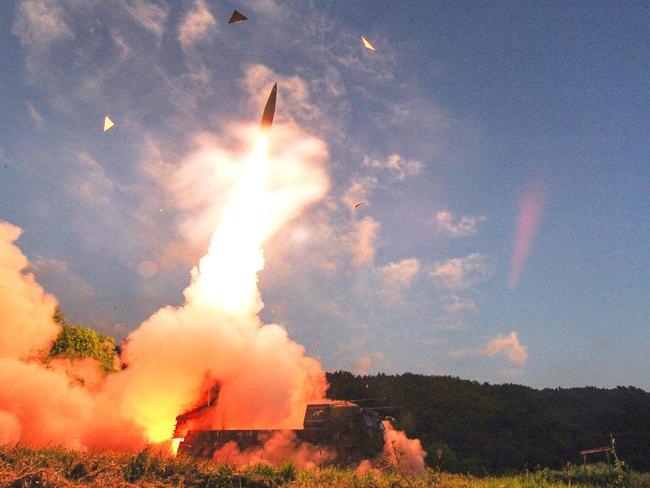
NUCLEAR POWER
Sunday’s test suggests the North tested a high-yield but compact nuclear weapon that could be launched on a missile of intermediate or intercontinental range.
Hans Kristensen, a nuclear weapons expert at the Federation of American Scientists, said the North probably will need to do more tests before achieving a functioning hydrogen bomb design.
The latest test comes following a war of words between Pyongyang and Washington after North Korea threatened to launch ballistic missiles toward the US Pacific territory of Guam, intending to create “enveloping fire” near the military hub.
Foreign Affairs Minister Julie Bishop said North Korea’s latest missile test was “exponentially” more powerful than any previous test.
“We are still to verify precisely what type of bomb test it was but this is a dangerous escalation and we must redouble our efforts to compel North Korea to change its behaviour and deter it from carrying out any other tests,” she told Sky News.
Prime Minister Malcolm Turnbull this morning warned the risk of war on the Korean Peninsula is greater than it has been in 60 years.
“The time has come for all nations including China to take action to bring this regime to its senses,” Mr Turnbull said.
“Conflict on the Korean Peninsula would be a disaster for the region and the world.”
— with the Associated Press



